The 1920 Buffalo Nickel’s mint mark is located on the reverse side, centered directly beneath “FIVE CENTS”. To identify your coin’s origin, turn it over and look for a small letter in this location. No mint mark indicates production at the Philadelphia Mint, “D” signifies the Denver Mint, and “S” represents the San Francisco Mint. These mint marks are crucial for determining your 1920 Buffalo Nickel’s value, as coins from different mints have varying rarity levels and worth. The coin’s condition, combined with its mint mark, significantly impacts its collectible value and market price among numismatists.
That old Buffalo nickel from 1920 sitting in your drawer might be worth significantly more than five cents. While most circulated examples trade for a few dollars, certain mint marks, error varieties, and high-grade specimens can command hundreds or even thousands of dollars from collectors. Understanding what separates a common piece from a valuable treasure starts with identifying your coin’s origin and condition.
Identifying Your 1920 Buffalo Nickel’s Mint Mark
Before determining value, you need to identify which of the three U.S. Mints produced your coin. The mint mark appears on the reverse side, centered directly beneath “FIVE CENTS” on the mound where the buffalo stands.
Turn your coin to the tails side and examine the area below the denomination. If you see no letter at all, your coin came from the Philadelphia Mint. A small “D” indicates Denver production, while an “S” marks San Francisco origin. This tiny letter makes an enormous difference in value—the 1920-S version can be worth ten times more than a Philadelphia example in the same condition.
The 1920 Philadelphia issue had a mintage of 63,093,000 coins, making it relatively common. Denver produced 9,418,000 pieces that year, while San Francisco struck just 9,689,000. Lower mintages typically mean higher values, especially for the San Francisco mint mark.
Standard Values Across Mint Marks and Grades
The condition grading system ranges from Good (G-4) for heavily worn coins up to Mint State (MS-60 through MS-70) for uncirculated pieces. Most 1920 Buffalo nickels you’ll encounter show significant wear from decades of circulation.
1920 Philadelphia (No Mint Mark) Values:
| Grade | Value |
|---|---|
| Good (G-4) | $1.50 – $2.00 |
| Fine (F-12) | $3.50 – $5.00 |
| Very Fine (VF-20) | $8.00 – $12.00 |
| Extremely Fine (EF-40) | $25.00 – $35.00 |
| About Uncirculated (AU-50) | $55.00 – $75.00 |
| Mint State (MS-60) | $110.00 – $140.00 |
| Mint State (MS-65) | $475.00 – $625.00 |
1920-D Denver Values:
| Grade | Value |
|---|---|
| Good (G-4) | $6.00 – $8.00 |
| Fine (F-12) | $18.00 – $25.00 |
| Very Fine (VF-20) | $45.00 – $65.00 |
| Extremely Fine (EF-40) | $125.00 – $165.00 |
| About Uncirculated (AU-50) | $240.00 – $300.00 |
| Mint State (MS-60) | $425.00 – $550.00 |
| Mint State (MS-65) | $2,100.00 – $2,800.00 |
1920-S San Francisco Values:
| Grade | Value |
|---|---|
| Good (G-4) | $6.50 – $9.00 |
| Fine (F-12) | $22.00 – $30.00 |
| Very Fine (VF-20) | $75.00 – $95.00 |
| Extremely Fine (EF-40) | $185.00 – $240.00 |
| About Uncirculated (AU-50) | $335.00 – $425.00 |
| Mint State (MS-60) | $525.00 – $675.00 |
| Mint State (MS-65) | $3,400.00 – $4,200.00 |
A Heritage Auctions sale in January 2023 recorded a 1920-S graded MS-66 selling for $8,400, demonstrating how premium quality examples command exponential prices. The same auction house sold a 1920-D MS-66 for $5,280 in March 2023.
Valuable Error Varieties to Search For
Error coins occur when something goes wrong during the minting process, creating unique specimens that collectors actively seek. The 1920 Buffalo nickel has several documented error types worth examining your coin for.
Doubled Die Obverse: This error shows doubling in the date, letters in “LIBERTY,” or details in the Native American portrait. Strong doubling visible to the naked eye on a 1920 Philadelphia example can add $75 to $150 in circulated grades, while uncirculated specimens may reach $400 to $650. The 1920-D with noticeable doubled die features commands $200 to $350 in Fine condition.
Off-Center Strikes: When the planchet (blank metal disc) isn’t properly centered between the dies, part of the design gets cut off. A 1920 nickel struck 10-15% off center with a full date visible typically sells for $85 to $140. More dramatic off-center errors of 25-35% can bring $200 to $400, while 50% or greater off-center strikes with visible dates have sold for $600 to $900 according to GreatCollections auction records from 2022-2023.
Repunched Mint Marks: On Denver and San Francisco coins, sometimes the mint mark was punched into the die multiple times in slightly different positions. Under magnification, you’ll see a shadow or doubling of the “D” or “S.” A clear repunched mint mark on a 1920-D adds $35 to $75 in average circulated condition, with nicer examples reaching $150 to $250.
Strike-Through Errors: These occur when foreign material gets between the die and planchet during striking, leaving an impression on the finished coin. Strike-throughs on 1920 nickels showing clear shapes of cloth fibers, wire fragments, or other debris typically value at $50 to $120 depending on how dramatic and visible the error appears.
Clipped Planchets: If the metal blank was improperly cut from the sheet, resulting in a missing section of the coin, you have a clipped planchet error. Straight clips removing 5-10% of the coin sell for $45 to $95, while curved clips of similar size bring $55 to $110. A dramatic 20% clip can command $175 to $275.
Lamination Errors: The nickel alloy (75% copper, 25% nickel) sometimes separates in layers, creating a peeling or flaking effect. Minor lamination on a 1920 Buffalo nickel adds $25 to $50, while coins with dramatic peeling covering significant portions of the design reach $85 to $160.
The “Three-and-a-Half Legs” Buffalo Variety
While the famous “Three-Legged Buffalo” error occurred in 1937, not 1920, some 1920 examples show weak strikes that partially obscure the buffalo’s legs. These aren’t true error varieties but rather strike weaknesses common to the series. Collectors generally don’t pay premiums for weak strikes unless the coin grades high in other respects. A well-struck buffalo with full horn detail and clear tail commands better prices than weakly struck examples in the same technical grade.
What Affects Your 1920 Buffalo Nickel’s Value Most
Beyond mint mark and errors, several factors dramatically impact what collectors will pay. Strike quality varies significantly—coins with full detail in the buffalo’s horn and the Native American’s hair braid command 20-30% premiums over weakly struck examples. The highest point of wear on Buffalo nickels is the buffalo’s hip and the cheekbone on the obverse, so preservation of these areas indicates better overall condition.
Luster on uncirculated specimens ranges from dull and lifeless to brilliant and vibrant. Original mint luster, even if slightly subdued, adds considerable value. A 1920-S graded MS-64 with full original luster sold for $2,650 at Stack’s Bowers in February 2023, while a similarly graded example with reduced luster brought only $1,875.
Surface quality matters enormously at higher grades. Coins with fewer contact marks, no corrosion or environmental damage, and original surfaces receive premium prices. Cleaned coins—those that have been artificially brightened or polished—typically sell for 30-50% less than problem-free examples. Professional grading services like PCGS and NGC note cleaning on their labels, which significantly hurts resale value.
Toning, the natural coloration that develops over decades, affects value depending on its attractiveness. Pleasing golden-brown or blue-gray toning can add 10-25% to value, while dark, uneven, or spotted toning reduces desirability. A 1920 Philadelphia MS-65 with attractive original toning achieved $725 at a David Lawrence Rare Coins auction in 2023, well above the $475-625 typical range.
Finding Professional Authentication and Grading
For any 1920 Buffalo nickel worth more than $75-100, professional grading provides authentication, condition verification, and protective encapsulation. The two primary services, Professional Coin Grading Service (PCGS) and Numismatic Guaranty Company (NGC), charge $20-40 for standard service, with higher fees for faster turnaround or economy bulk submissions.
Submitting a common circulated coin for grading rarely makes economic sense—the grading fee exceeds the coin’s value. However, apparent uncirculated examples, suspected error varieties, or coins with the 1920-S mint mark in Extremely Fine or better condition warrant professional evaluation. The third-party grade increases buyer confidence and typically results in 15-30% higher selling prices than raw (ungraded) coins.
Before spending money on grading, consider a preliminary evaluation from a local coin dealer or coin club member experienced with Buffalo nickels. Many dealers offer free verbal assessments and can tell you whether professional grading makes financial sense for your specific coin.
Maximizing Returns When Selling Your 1920 Buffalo Nickel
Once you’ve identified your coin’s mint mark, grade, and any error features, several selling venues offer different advantages. Local coin shops provide immediate payment but typically offer 60-75% of retail value since they need profit margin for resale. This works well for common circulated pieces worth under $50 where convenience outweighs maximizing every dollar.
Online marketplaces like eBay reach the broadest audience but require photography skills, accurate descriptions, and dealing with shipping and potential disputes. Research completed sales (not asking prices) for comparable 1920 nickels in similar grades to set realistic expectations. A 1920-D in Fine condition consistently sells for $20-25 on eBay, while dealers might offer $15-18.
Auction houses like Heritage, Stack’s Bowers, and GreatCollections handle better pieces, typically those worth $200 or more. They charge seller’s fees of 10-20% but attract serious collectors willing to pay strong prices for quality material. A 1920-S MS-64 might bring $1,800-2,200 through auction versus $1,400-1,600 from a dealer buying for inventory.
Coin shows provide opportunities to compare offers from multiple dealers in one location. Dealers compete for inventory at shows and sometimes pay stronger percentages than in their shops. Shows also let you network with specialist collectors who focus specifically on Buffalo nickels and pay premiums for pieces that fill gaps in their collections.
Building Your Buffalo Nickel Collection Knowledge
Understanding the 1920 Buffalo nickel’s place in the series helps contextualize its value. Designer James Earle Fraser’s iconic design debuted in 1913 and continued through 1938, with production totaling over 1.2 billion coins across all years and mints. The 1920 issues represent middle-era production when quality control had improved from earlier years but before the devastating wear issues that plagued later 1920s and 1930s production.
Comparing your 1920 coin to key dates helps perspective. The 1920-S, while scarcer than Philadelphia issues, remains far more available than genuinely rare dates like the 1913-S Type 2, 1914-D, or 1926-S. This moderate scarcity creates steady collector demand without the extreme prices that put truly rare dates beyond most budgets.
Serious Buffalo nickel collectors pursue several goals: complete date-and-mint-mark sets, type sets showing design variations, or high-grade specimens of common dates. Your 1920 nickel serves all these collecting approaches, making it consistently saleable to an established market rather than waiting for a specialized buyer.
Protecting and Storing Your Valuable 1920 Nickel
Proper storage prevents further deterioration and maintains current value. Never clean your coin—even gentle rubbing removes microscopic surface metal and dramatically reduces value. Handle coins by their edges, not faces, to avoid fingerprint acids etching the metal over time.
For coins worth $20-100, non-plasticized flips (2×2 cardboard holders with clear plastic windows) provide adequate protection at minimal cost. Coins valued above $100 benefit from rigid plastic holders like Airtites or PCGS/NGC professional slabs. Avoid PVC-containing plastics, which leach chemicals that cause green corrosion over years.
Store your collection in a cool, dry environment with stable temperature and humidity. Basement dampness and attic heat fluctuations both accelerate toning and corrosion. Safety deposit boxes provide security and environmental stability for valuable pieces, while home safes work well if you maintain proper climate control.
Resources for Current Market Values
Coin values fluctuate with precious metal prices (nickel and copper content), collector demand, and overall economic conditions. The melt value of a 1920 Buffalo nickel, based on copper and nickel content, currently sits around $0.05-0.06, essentially irrelevant compared to numismatic value but providing a minimum floor.
The Red Book (A Guide Book of United States Coins), published annually, provides baseline retail values updated yearly. Online resources like PCGS CoinFacts and NGC Coin Explorer offer free access to auction records and population reports showing how many examples have been professionally graded at each level. Auction archives at Heritage Auctions and GreatCollections let you research actual sale prices for comparable coins, giving realistic market values rather than optimistic price guides.
Following these resources helps you track value changes over time. Buffalo nickel values have grown steadily at 3-5% annually over the past decade, with high-grade examples appreciating faster than common circulated pieces. Your 1920-S MS-65 worth $3,400 today might reach $4,200-4,800 within five years if historical trends continue.
Your Next Steps With That 1920 Buffalo Nickel
Start by examining your coin’s reverse for the mint mark location beneath “FIVE CENTS”—that single letter determines whether you have a $2 common piece or a $300 collectible. Check both sides carefully under good lighting or mild magnification for any of the error features discussed, particularly doubled dies and off-center strikes that significantly boost value. Compare your coin’s condition honestly against online images of graded examples to estimate the grade range, remembering that most collectors overestimate their coins’ conditions by one or two grade levels. If your initial research suggests value exceeding $100, seek a professional opinion before making selling decisions, as accurately identifying that 1920-S MS-65 versus MS-63 represents a $1,000+ value difference worth verifying.
You may be interested:
- 1859 Indian Head Penny Coin Value Complete Errors List And No Mint Mark Worth Guide For Collectors
- 1911 V Nickel Coin Value Guide Complete Errors List And No Mint Mark Worth Today
- 1902 Dime Coin Value Complete Errors List With O S And No Mint Mark Worth Guide
- 1788 Quarter Coin Value Complete Guide Errors List And D S P Mint Mark Worth Revealed
- 1776 To 1976 Bicentennial Half Dollar Coin Value Complete Errors List And What Your D S And No Mint Mark Coins Are Actually Worth
- 1990 Penny Coin Value Errors List How D S And No Mint Mark Pennies Are Worth Thousands Of Dollars

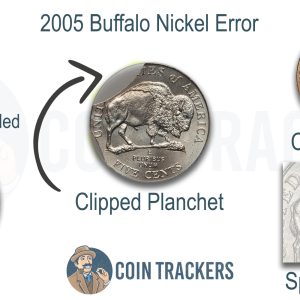
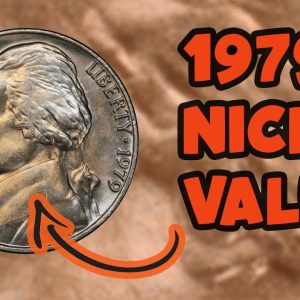
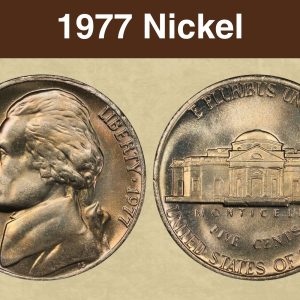
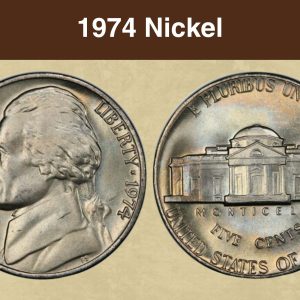
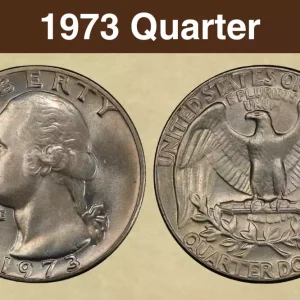
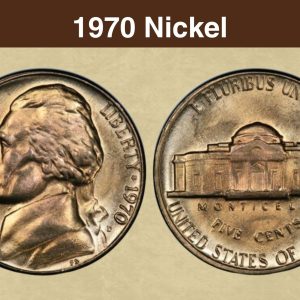
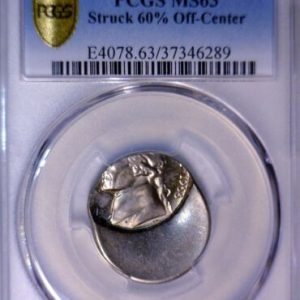
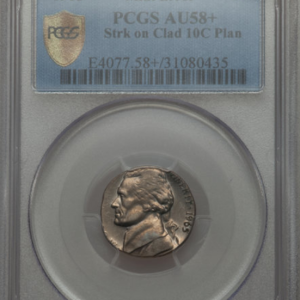
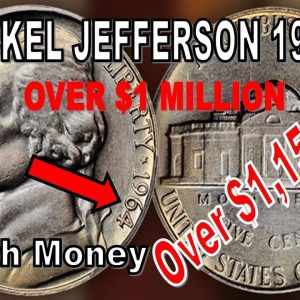
Is a 1920 Buffalo Nickel worth anything?
1920 Buffalo Nickel Value According to the NGC Price Guide, as of October 2025, a Buffalo Nickel from 1920 in circulated condition is worth between $1 and $65.
Where is the mint mark on a 1920 buffalo nickel?
On a 1920 Buffalo nickel, the mint mark is located on the reverse (tails) side of the coin, centered under the words “FIVE CENTS”. If your 1920 nickel has a “D”, it was minted in Denver, or an “S” for San Francisco; a lack of a mint mark means it was from the Philadelphia Mint.
What year of Buffalo nickels are worth money?
Certain Buffalo nickels are worth money due to specific dates, mint marks, and rare errors, such as the 1918-D (8 over 7), 1937-D (“3-Legged”), 1926-S, and 1916 Doubled Die Obverse. While most common circulated nickels are worth little more than face value, key dates and varieties in good condition can fetch significant amounts, sometimes thousands of dollars.
What is the most valuable error on a buffalo nickel?
1916/16 (Doubled Die Variety) You will notice that the duplicate digits are a little to the right and lower than the more pronounced date of 1916. This die variety is the most sought-after of all the Buffalo nickel varieties. It is very valuable in circulated grades and very rare in uncirculated grades.